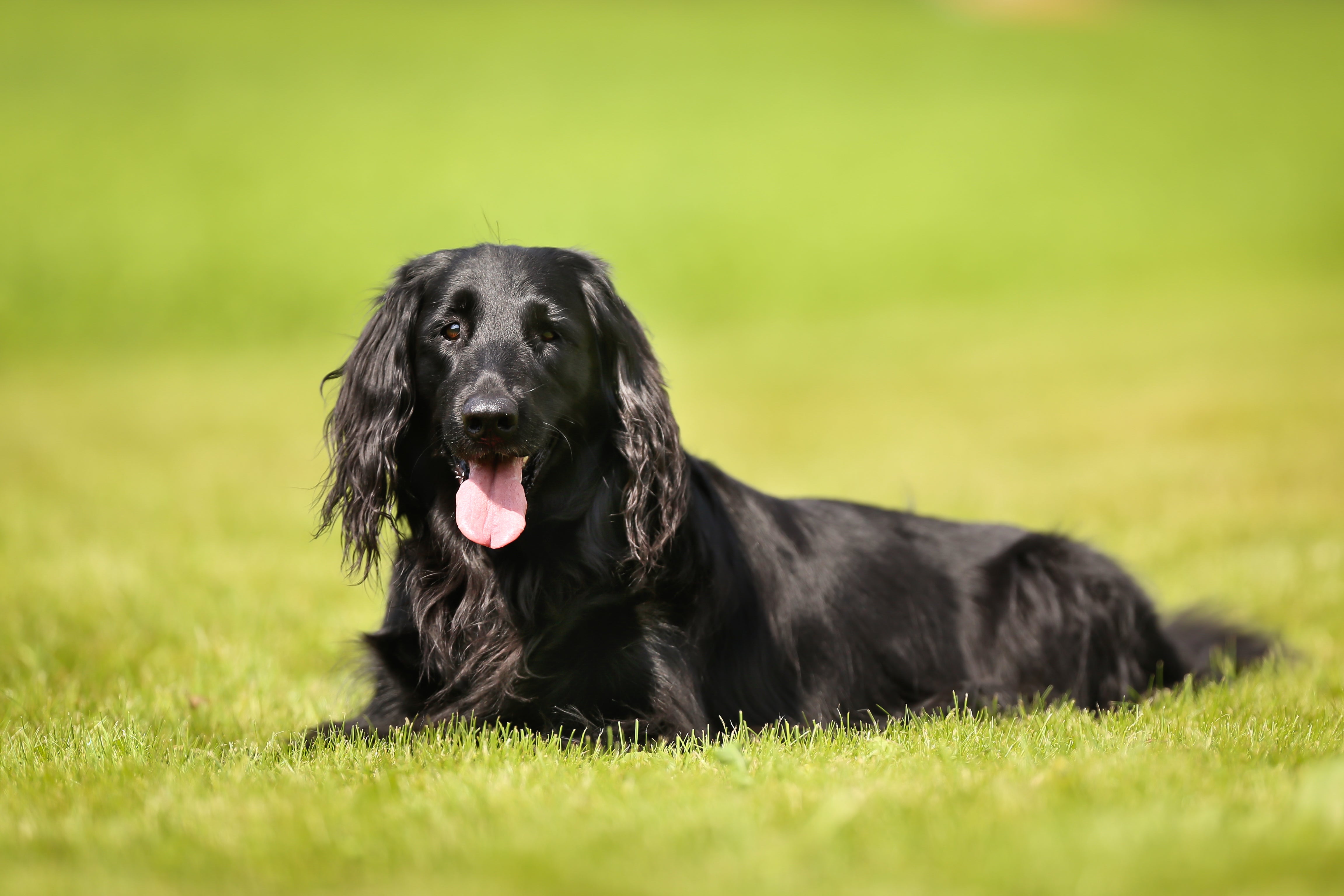Flat-Coated Retriever
The Flat-Coated Retriever beautifully blends power and grace. With a long, smooth head that seamlessly flows into its body, this breed boasts a striking and harmonious appearance. It moves with a fluid, ground-covering, efficient, and effortless gait. A thick, flat coat offers the perfect balance of protection and lightness, enhancing the breed’s versatility. These features make the Flat-Coated Retriever an athletic and charming companion.
Breed characteristics carousel
Learn More
Need to Know
- Dog suitable for owners with some experience
- Basic training required
- Generally healthy breed
- Enjoys active walks
- Large dog
- Some drool
- Requires regular grooming
- Quiet dog
- Barks and alerts to visitors/anything unusual
- Generally friendly with other dogs
- Gets along with other pets with training
- May need additional supervision to live with children
- Needs a large yard, either in suburban or rural areas
- Can be left alone occasionally with training
- AKC Registered Breed

Personality
The Flat-Coated Retriever is a delightful, energetic dog that loves to play and retrieve. Outdoors they’re lively and always on the move, but indoors, they’re calm and affectionate. Known for their devotion and friendly nature, they make excellent family companions. Regular exercise is essential to keep them well-behaved, and they are very responsive to training. Their wagging tail is a charming sign of their happiness and enthusiasm.
In the early days, retrieving dogs were essential for fishermen, helping to fetch fish and objects from the water. By the 19th century, these dogs were particularly popular with Newfoundland’s cod fisheries. The favored breeds at the time were Labradors (different from today’s Labrador Retrievers) and various sizes of Newfoundlands.
The fishery dogs, known for their exceptional swimming and retrieving skills, were crossed with British breeds like Setters and Pointers to enhance them. This led to the creation of the Curly-Coated Retriever, which gained popularity in America and England and was among the first breeds shown at English dog shows.
Toward the end of the 1800s, the wavy coat’s water repellency was re-evaluated, leading to exciting new crosses with straighter-haired breeds and possibly Setters and Collies. This innovation resulted in the Flat-Coated Retriever quickly capturing hearts with charm and versatility.
If you like your retrievers a little racier and leaner than the more common Golden Retriever or Labrador Retriever, but with a dash more thoughtfulness and sensitivity, the Flat-Coated Retriever dog may fit the bill. The ideal owner is an active, enthusiastic individual or family who enjoys engaging with a playful, friendly dog and can provide regular exercise and consistent training.
The Flat-Coated Retriever is a tireless worker who excels at long-distance walks, running, swimming, and tracking scents. The “Flatie” is always eager to join any activity and happiest when working alongside their owner. They thrive with a variety of walking routes and plenty of swimming opportunities.
Flat-Coated Retrievers need ample space to accommodate their energetic nature. Ideally, they benefit from a large yard or access to open areas to run and play freely. While they can adapt to various living situations, including apartments, they require regular opportunities for exercise and activities to stay happy and healthy. Regular visits to parks or trails can help meet their space and activity needs if a large yard isn’t available.
The Flat-Coated Retriever breed is a joyful companion who needs daily brushing to keep their coats in good condition. Pay special attention to their feathers; they can collect debris. Check their feet regularly for dried mud or other foreign matter.
The Flat-Coated Retriever is slow to mature and needs consistent training. The breed thrives on dog training with a patient, enthusiastic trainer. They love training sessions with tasty treats, exciting toys, and activities like tugging, retrieving, and scent work. However, be mindful that Flatties can get bored quickly and are surprisingly sensitive. To keep them engaged, make training sessions fun and varied.
The Flat-Coated Retriever dog is a sensitive, slow-maturing breed that thrives in a calm, steady environment. They’re best suited to homes with older children or teens who enjoy long walks and dog training. With the proper care and attention, these dogs make loyal, gentle, and loving companions.
The cost of a Flat-Coated Retriever from a breeder is significantly more than the cost of adopting one from a local shelter or rescue. The adoption fee usually covers additional items such as spaying or neutering, vaccines, and microchipping.

Learn more about feeding and caring for your Flat-Coated Retriever on Purina.
Did You Know?
- Flat-Coated Retrievers are known among fans as the Peter Pan breed due to their slow maturing, puppy-like behavior that extends well into adulthood and even old age.
- Flat-Coated Retrievers were among the first breeds to be shown at English dog shows. Their friendly and outgoing nature made them a favorite among early dog enthusiasts, and they continue to be known for their cheerful, easygoing personality.

